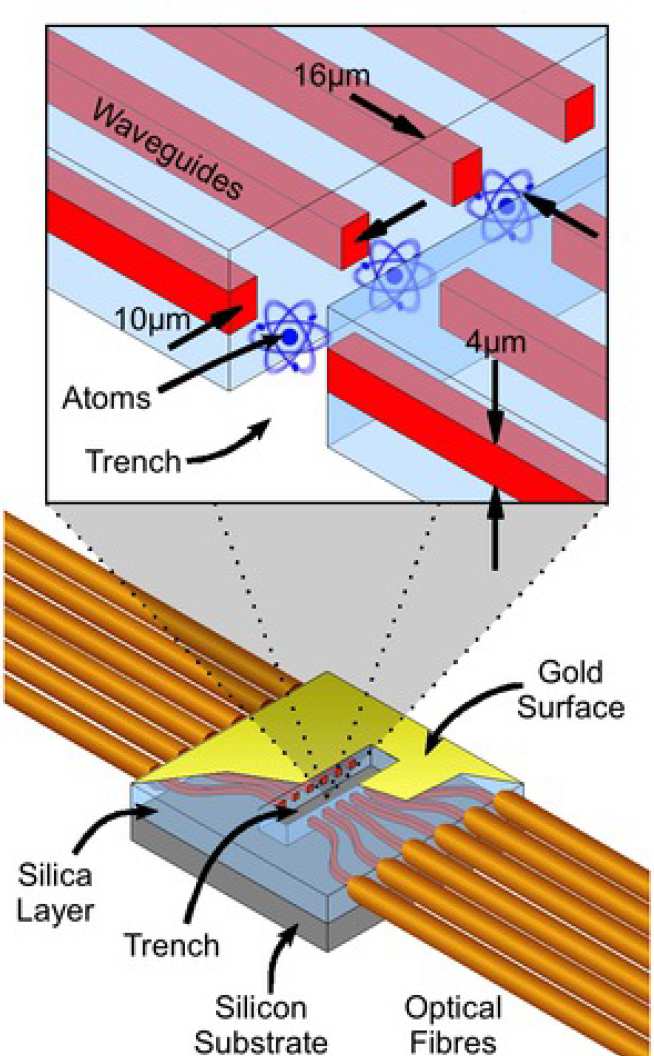What is that?

Optical waveguide chips are circuit boards for photons. That's why they are made of glass instead of copper. The conducting paths in that glass chip are regions with slightly different refractive index than its surrounding. Along these paths light is guided, just as in optical fibres. Waveguide chips are already in use in telecommunication networks, processing the data that is send around the world through optical fibres. But not only on commercial scales have those waveguide chips become an important tool. Also in fundamental photonic research experiments with such chips have shown promising results for their application in quantum information processing (QIP). So we are doing the step from a wire to a circuit board for optical access in atom optic experiments.
So that's the photons, but what about the atoms? Our waveguide chip is the first that is used to probe cold atoms. To control the atoms the chip is glued onto a copper sub chip and integrated into a vacuum chamber. The copper chip contains wires that produce magnetic fields when current is run through them. Atoms can interact with these fields, and in the correct field geometry they can be trapped and moved around. And we want to move them into a trench that cuts the waveguides right in the centre. So the light will exit the waveguide on one side of that trench, interact with the atoms in the trench and then couple back into the waveguide on the other side. The atoms will change the way the light propagates, so analysing the light at the output will tell us something about the small cloud of atoms in the trench. And since the light also influences the atoms, we can poke them in a very controlled way and see what happens. The advantage of our experiment compared to most others is that the interaction regions are very well localised within the atomic clouds. And that increases the probability for a single photon to interact with an atom. Since all this happens on an optical circuit board at up to twelve different light-atom interaction points the whole device is scalable, meaning it can be integrated in a larger and more complicated circuit. That's why we call it an atom-photon junction.


 We have already characterised the light-matter interaction on our combined magnetic/optical atom chip with spectroscopic experiments on a cloud of atoms released from a magneto-optical trap (MOT)
We have already characterised the light-matter interaction on our combined magnetic/optical atom chip with spectroscopic experiments on a cloud of atoms released from a magneto-optical trap (MOT)